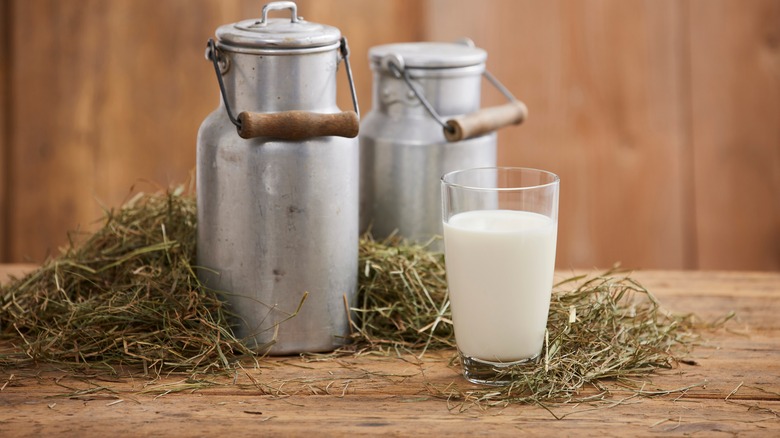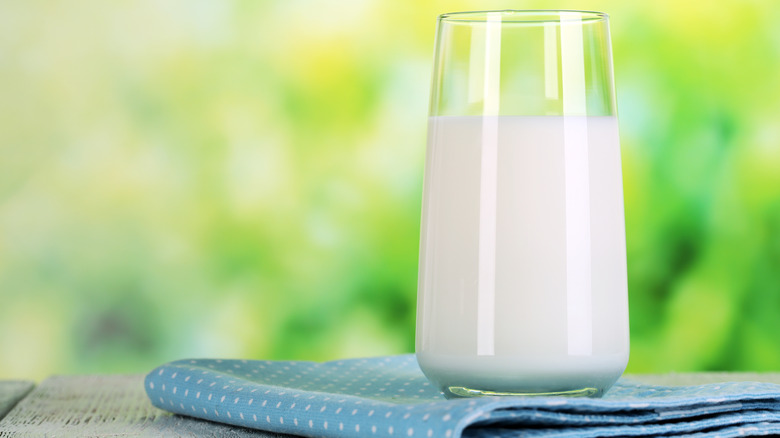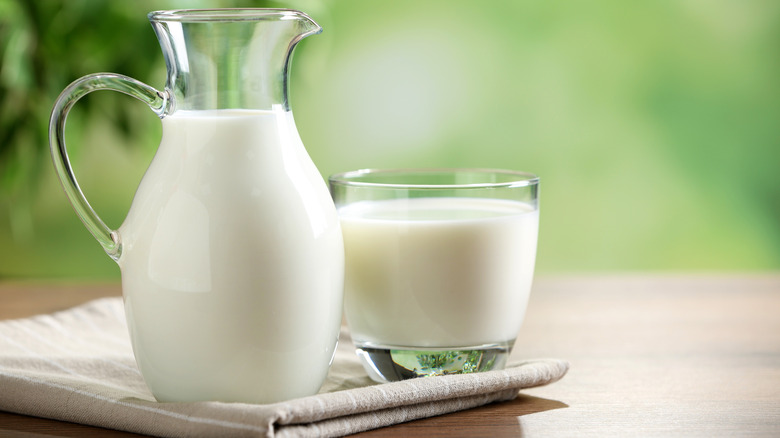The Difference Between Homogenization And Pasteurization
Some things just go better with milk. Moms make us drink it when we are little, to build strong bones, and they are wise to do so. When you drink milk every day, you're providing your body with protein, vitamin D, vitamin B12, calcium, and even fatty acids, which are all essential for strong bones and overall health. Southeast Orthopedic Specialists writes that the combination of Vitamin D with calcium is especially important for growing and maintaining healthy bones.
For many people, the craving for milk continues into adulthood. Healthline explains that the reason we might crave milk is that there's a small amount of sugar in it, and foods with both fat and sugar, often remind us of comfort foods. Our minds think "milk" and are drawn to how it makes us feel. Plus, can you really eat a piece of chocolate cake without a glass of milk?
Since cow's milk does come from a cow, it raises the question: is it safe to drink? Yes, it is. There are two processes used for milk before it hits your grocery store shelves: homogenization and pasteurization. They sound similar and can be confusing, but each one has a different job. Both processes make your milk the delicious, safe drink that it is.
Homogenization
When milk is fresh, the cream separates from the rest of the liquid. If you were to bring home milk that has had none of the cream removed or broken down, you'd end up with a glass of milk that has an added layer of cream floating on the top. Homogenization is the process of breaking down the cream, so you are left with the smooth and creamy milk you're used to, per Undeniably Dairy. Back in the old days, before homogenization, people would shake their bottles or cartons of milk before pouring it. This would mix the cream in with the milk and improve the texture, so it wasn't just floating around.
It wasn't until the late 19th century that homogenization came into play. According to Dairy Moos, the process works by pushing milk through a high-pressure valve that breaks the fat globules (the cream) into tiny pieces, which helps them to blend in better with the milk. Doing this also ensures that each glass you pour from one carton contains the same amount of fat. Homogenization doesn't purify or sanitize your milk. It simply makes the texture better.
Pasteurization
You may have memorized his name in school — Louis Pasteur is credited with the discovery of pasteurization in the 1800s, which is the process of heating liquids to a temperature that kills germs and bacteria, per Science History. Before Louis Pasteur came up with the idea and proved it to work, most people were risking their health when drinking many liquids, including milk. Refrigeration wasn't available and room-temperature liquids were ripe for bacterial growth. Today, milk goes through the heating process of pasteurization so it can be sold and consumed safely.
According to Masterclass, pasteurizing any liquid removes Salmonella, Listeria, and other bacteria. It even helps prevent certain diseases, such as tuberculosis, and allows your milk to have a longer shelf life. Still, is it dangerous to drink unpasteurized milk today? Have times changed? You've probably heard of people talking about that question. Some claim that unpasteurized milk (raw milk) is a healthy choice. However, the CDC recommends we do not drink unpasteurized milk. Any possible bacteria in raw milk have not been killed and it's a big risk to drink it.


